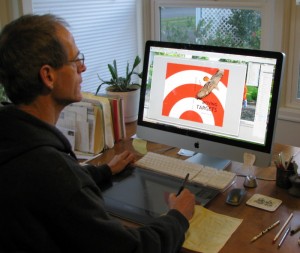Educational toys – toys that encourage play and learning – are a mainstay in our stores today, but it wasn’t always that way. In the early 1900s, most children’s toys were mere playthings and were either homemade or imported from Europe. And then along came Alfred Carlton (A.C.) Gilbert.
Born in Salem on this day (February 15) in 1884, Gilbert grew to become an Olympic champion, professional magician, and a Yale-trained physician. But toys, especially toys that taught and engaged kids, were his true love. I learned of this firsthand in the late 1950s and early 1960s. It began with a microscope, a telescope, and an Erector Set all manufactured and sold by The A.C. Gilbert Company and given to me as gifts.
I spent countless hours with these toys that withstood the rough handling of an energetic boy. Using the microscope and telescope, I explored worlds typically hidden from my sight. Constructing models with the Erector Set provided practice building things, completing projects, and patience. All the toys encouraged curiosity, imagination, and problem-solving.
In my zeal to play, I paid little attention to the written materials that come with them (including the directions!). As a result, I missed the personal messages that came from Mr. Gilbert as well as the stories behind the toys.
I had no idea Gilbert got his start in toys during his college years at Yale, where he traded a career in medicine for selling magic kits. When it became clear after graduation magic kits would not support his small but growing family, Gilbert came up with a new idea. Inspired by watching construction crews erecting towers while riding the train from New York City to Connecticut, he decided to make and sell construction kits. Gilbert named them Erector Sets.
Gilbert introduced his kits to the world one hundred years ago at the Toy Fair in New York City. The world loved them, and the A.C. Gilbert Company was well on its way to transforming the toy industry: American-made toys, advertising directly at children, and playthings that encouraged thinking and doing.
When I played with the Gilbert toys, I didn’t know how I lucky I was that the company that made them was still in business. During World War I, the government threatened to divert all manufacturing (even toys) to the war effort. This would have crippled the toy industry, and some toy companies permanently. But A.C. Gilbert didn’t allow that to happen. He traveled to Washington DC, persuaded The National Council of Defense to allow toymakers to continue manufacturing toys, and was heralded as “The Man Who Saved Christmas.”
As a kid, I didn’t know any of this. It would take me forty years to find out. In the meantime, I grew up, became a teacher, began writing for children, and moved to Oregon from my home on the east coat. The Gilbert toys came with me.
I finally discovered A.C. Gilbert in 1995 when I took my classroom of fourth graders to the A.C. Gilbert Discovery Village in Salem. There, tucked away in a small area separated from rooms of interactive displays, was a modest exhibit that told about A.C. Gilbert and his life. I was instantly intrigued, my curiosity piqued. Research followed, and then a children’s book about the most famous American toymaker.
So, why don’t we hear of A.C. Gilbert and his company today? The answer is simple. By the 1950s, America’s children were more interested in hula hoops and Silly Putty than construction sets and science kits. Gilbert retired in 1954, and turned the company over to his son. In 1961, Gilbert died. Three years later, his son died unexpectedly. By 1967, the A.C. Gilbert Company was bankrupt. The Erector name was eventually sold to the Meccano Company, a longtime competitor, and they continue to produce Erector construction kits of their own design today.
Toys made by The A.C. Gilbert Company remain today, a testament to their quality and to the childhood memories they invoke. I still have mine. So do many others. Collectors organized the A.C. Gilbert Heritage Society, with chapters throughout the country. Gilbert toys can be found at antique stores, auctions, and on e-Bay, some selling for as much as $8,000.
The true legacy of Alfred Carlton Gilbert goes beyond the toys he created and to the reason for those toys: to inspire, engage, and challenge children. This legacy will continue for all as long as there are manufacturers producing playthings that encourage children to think and learn.




